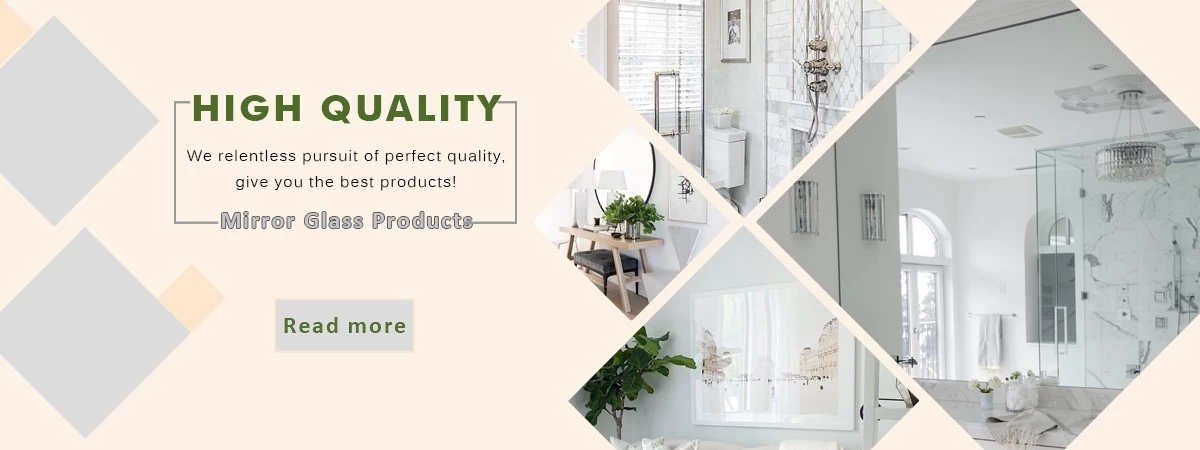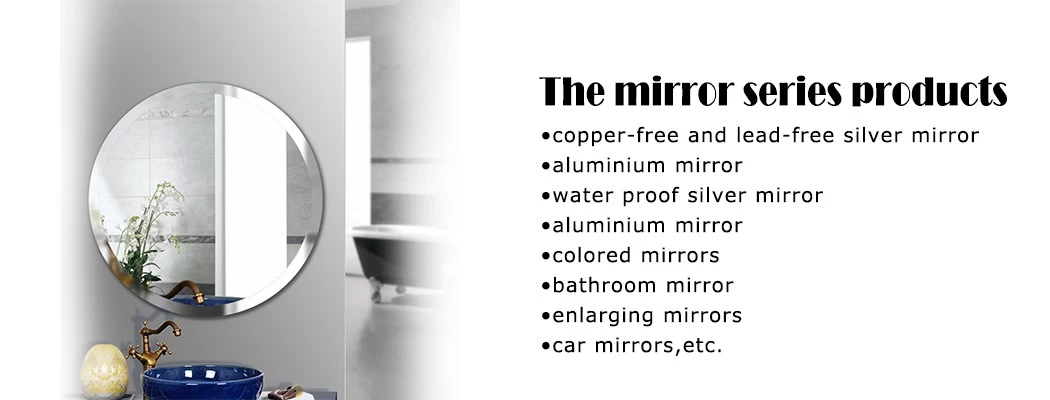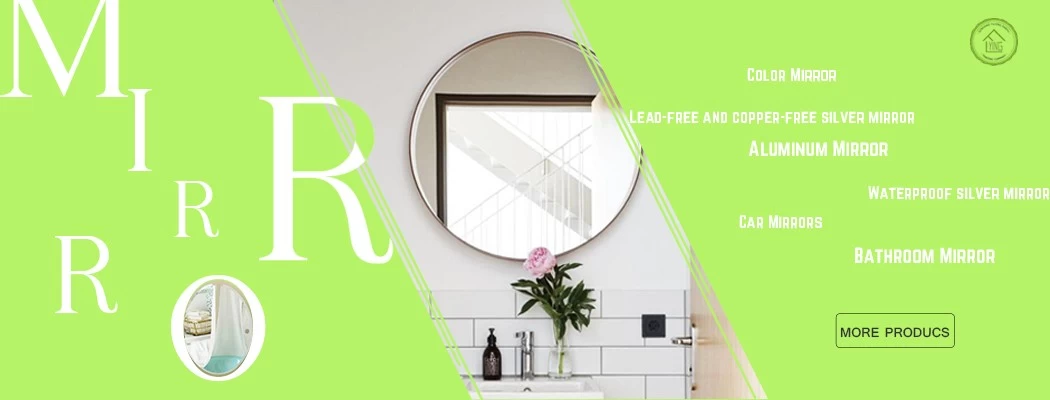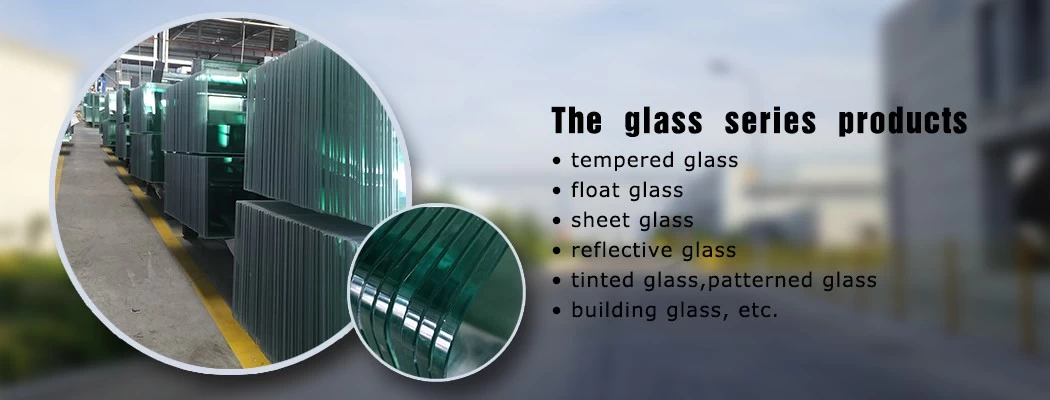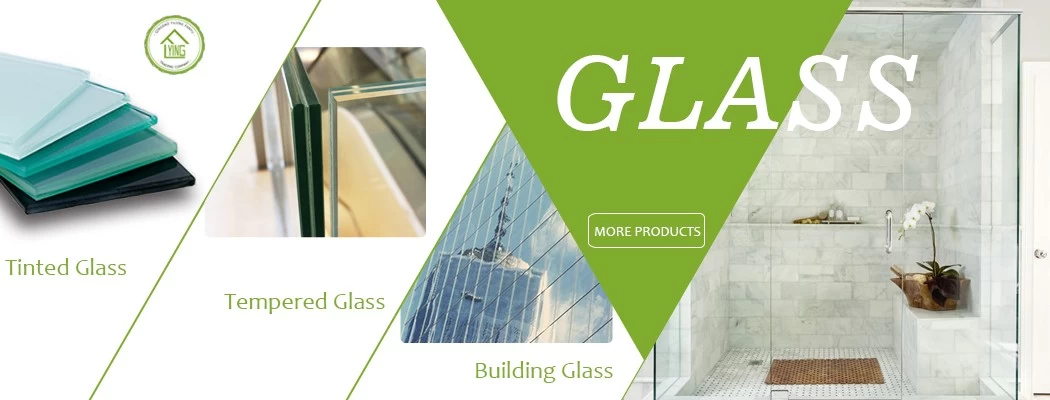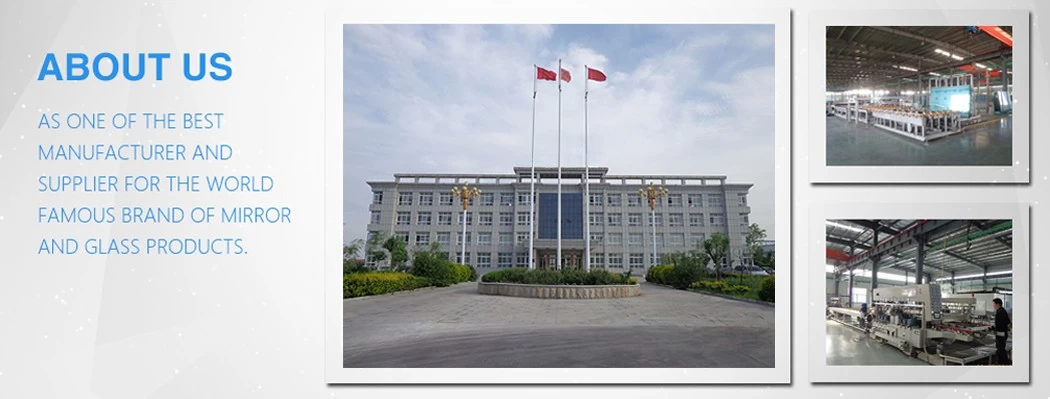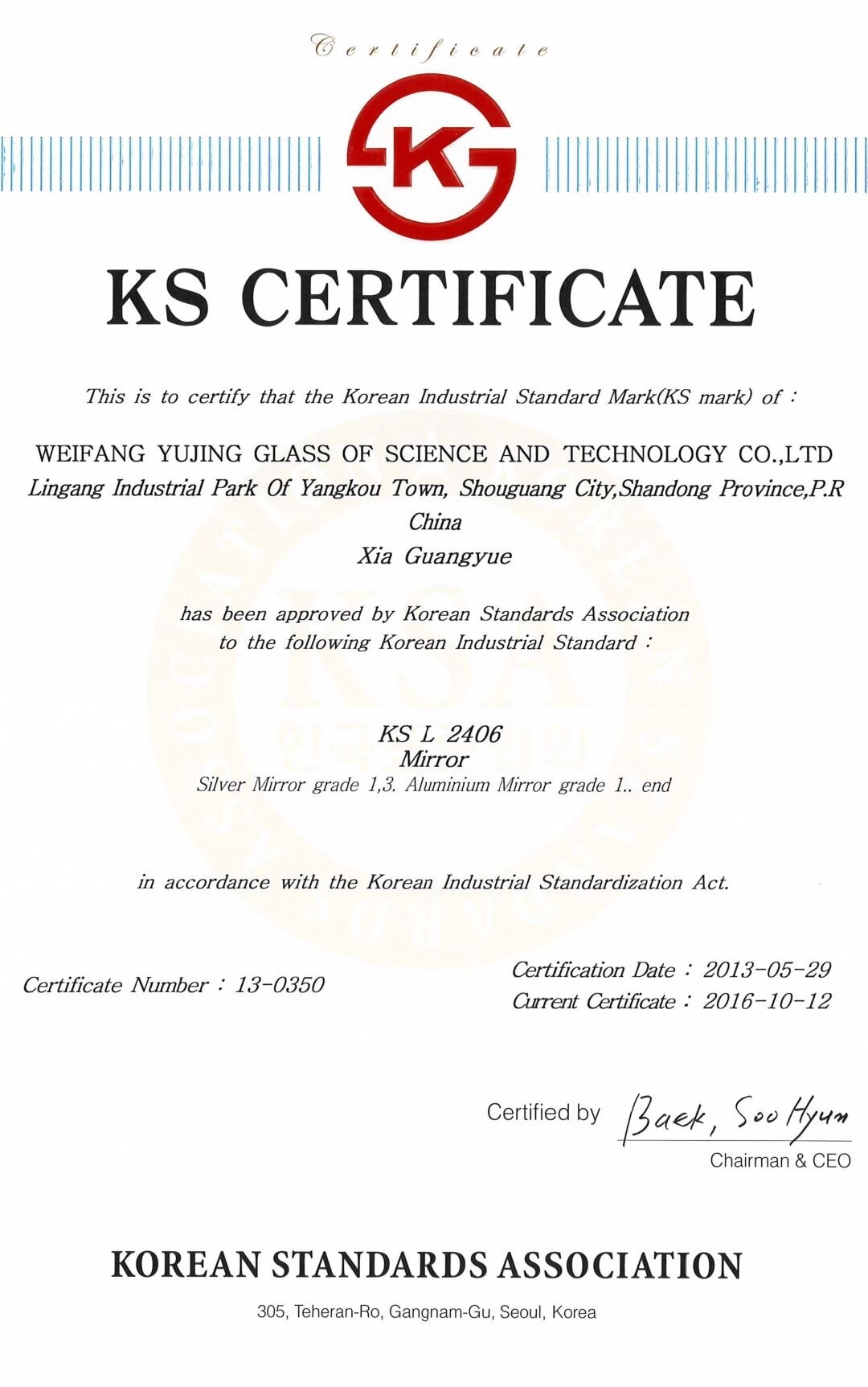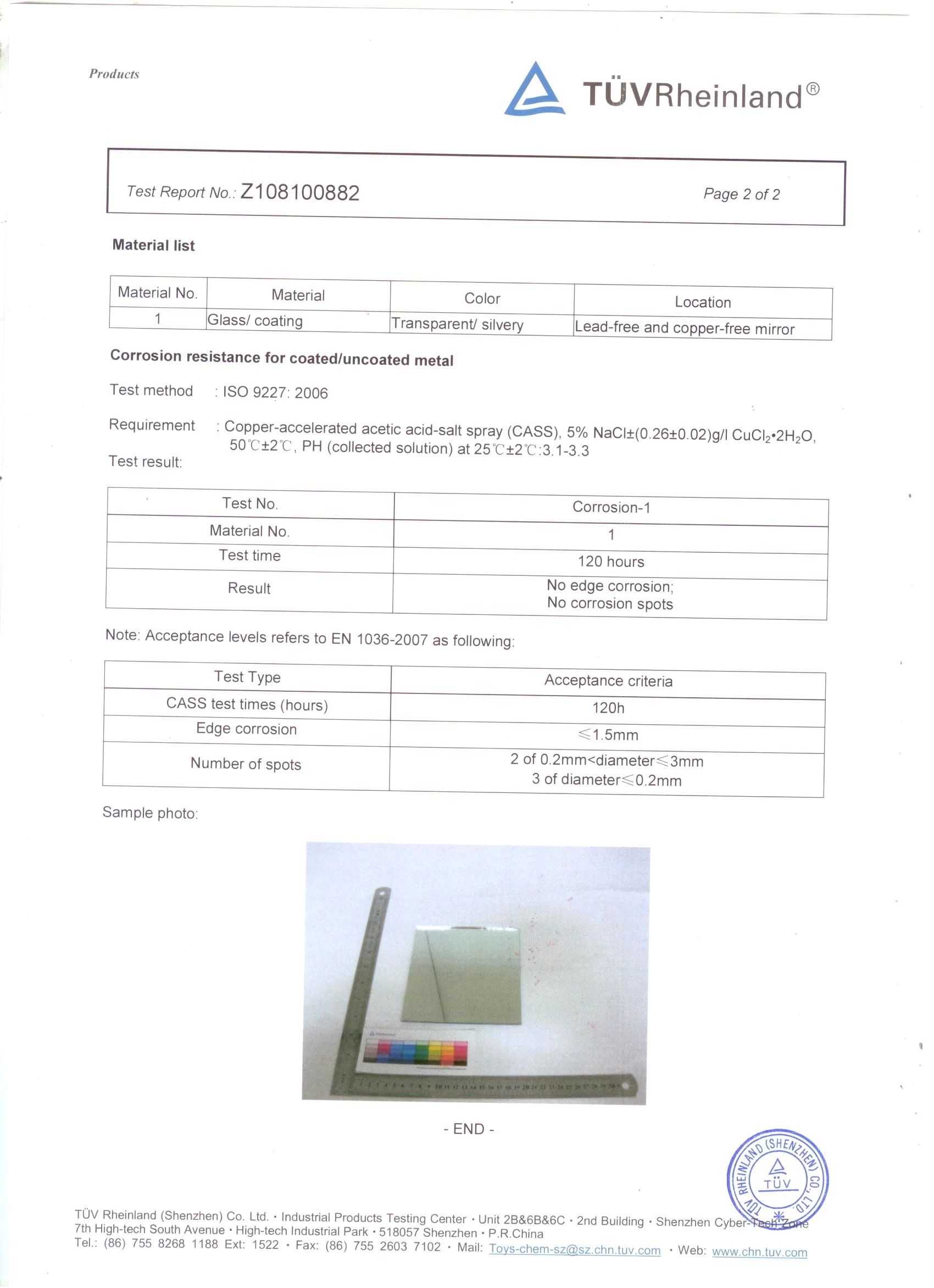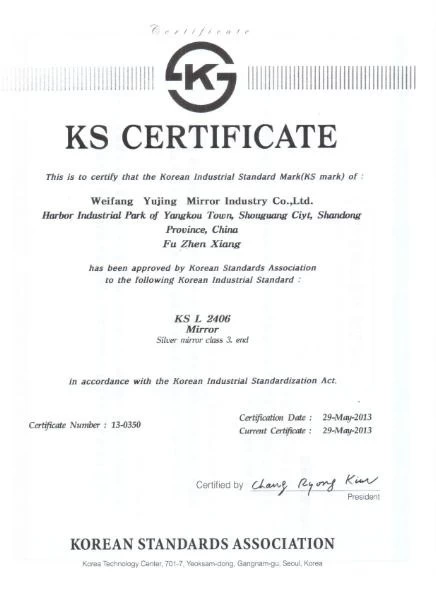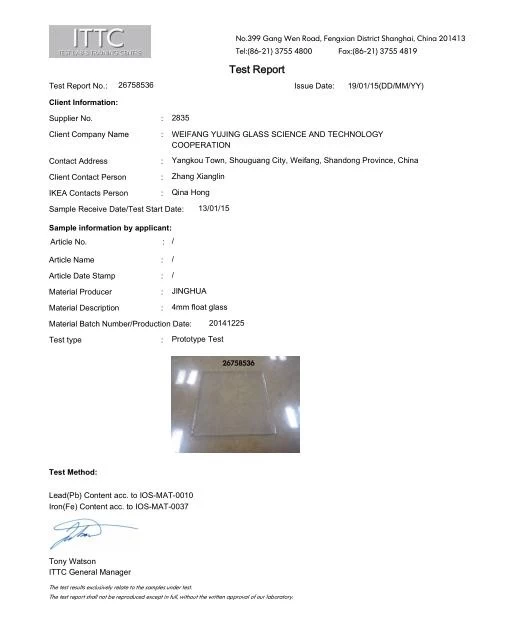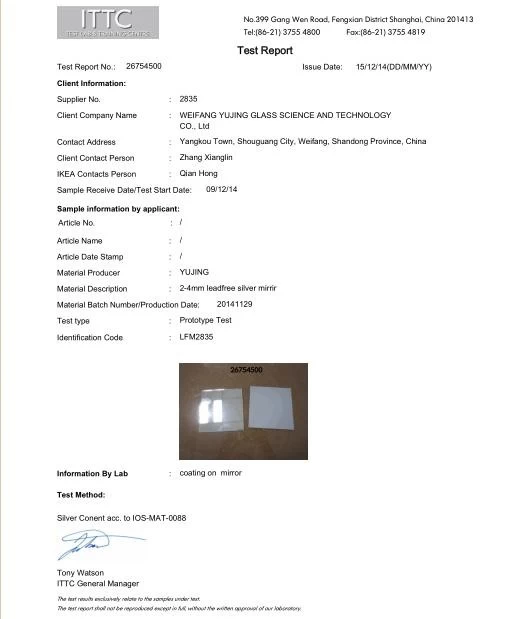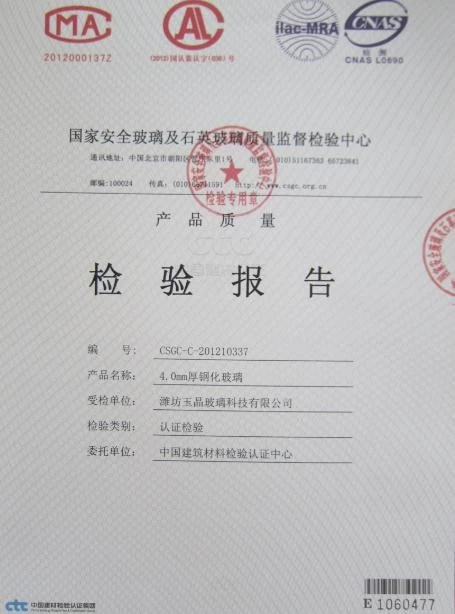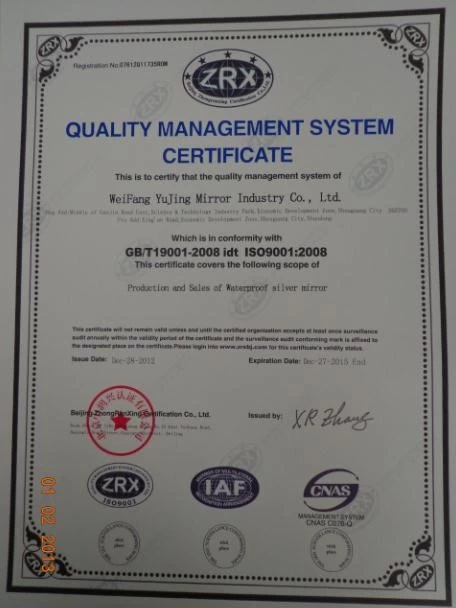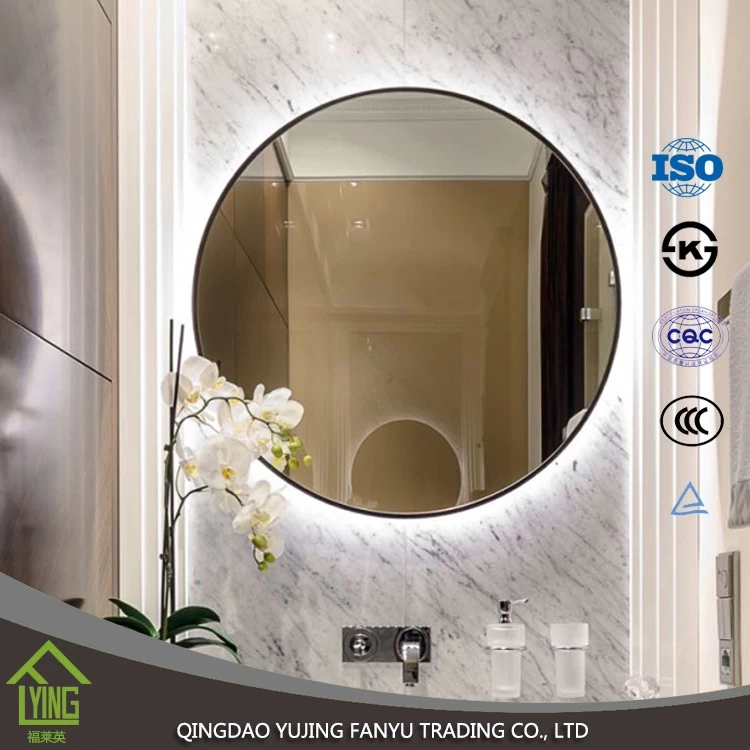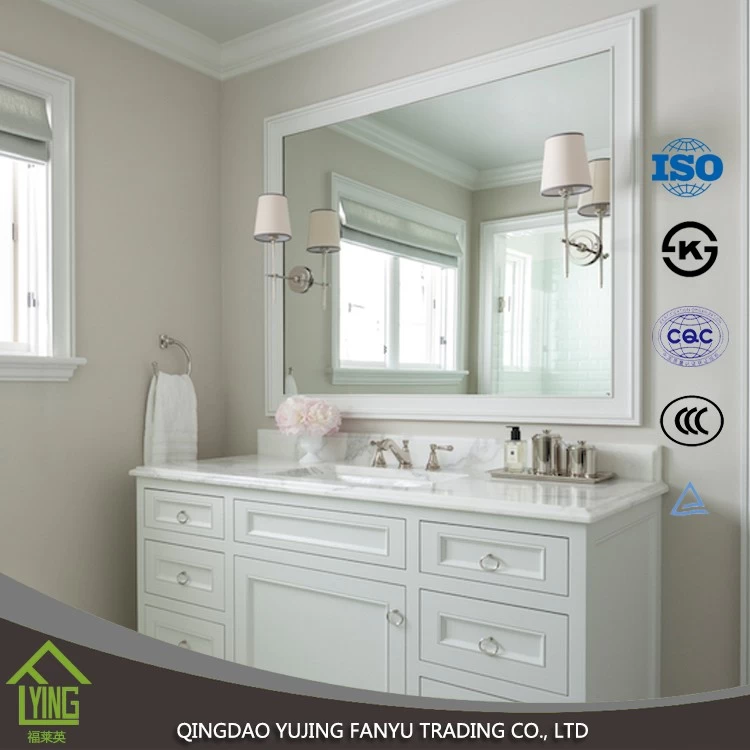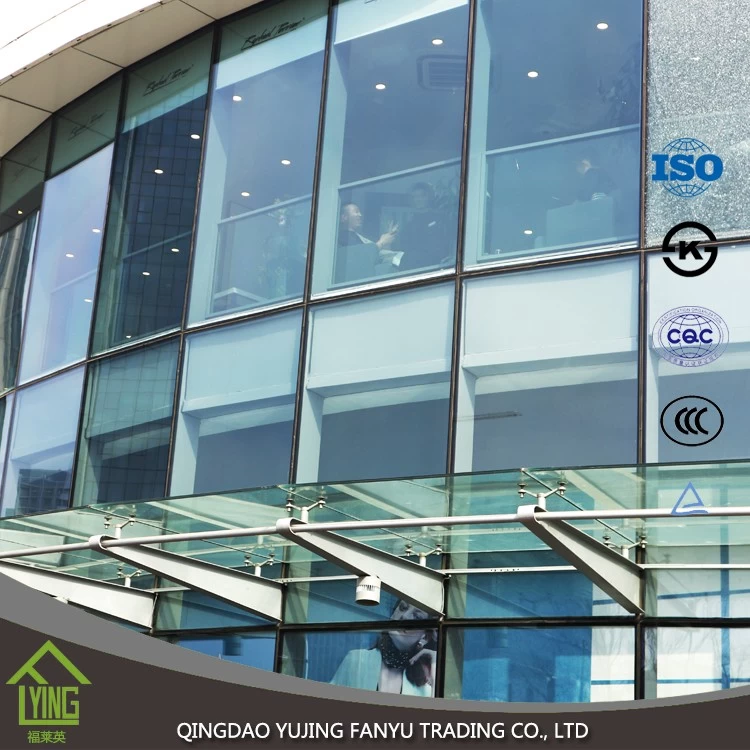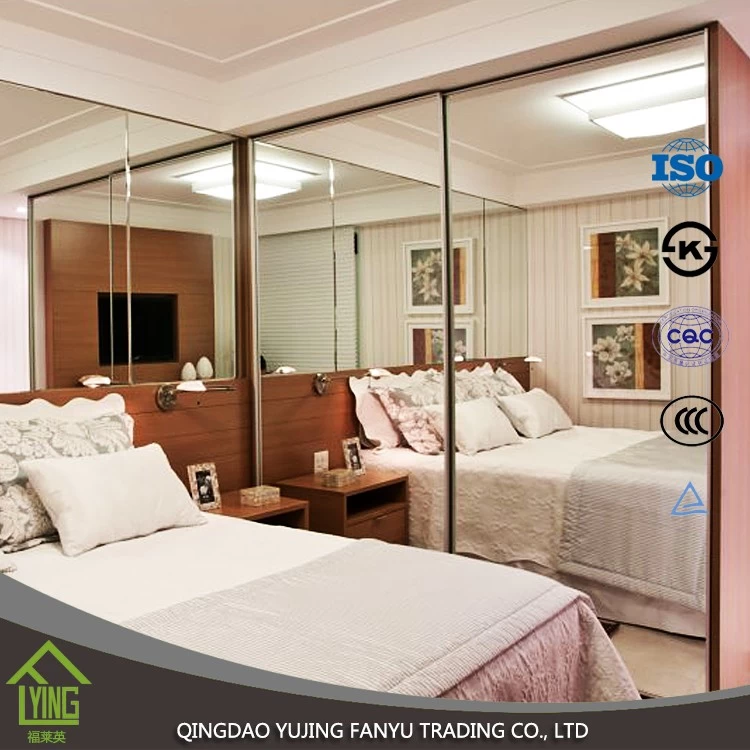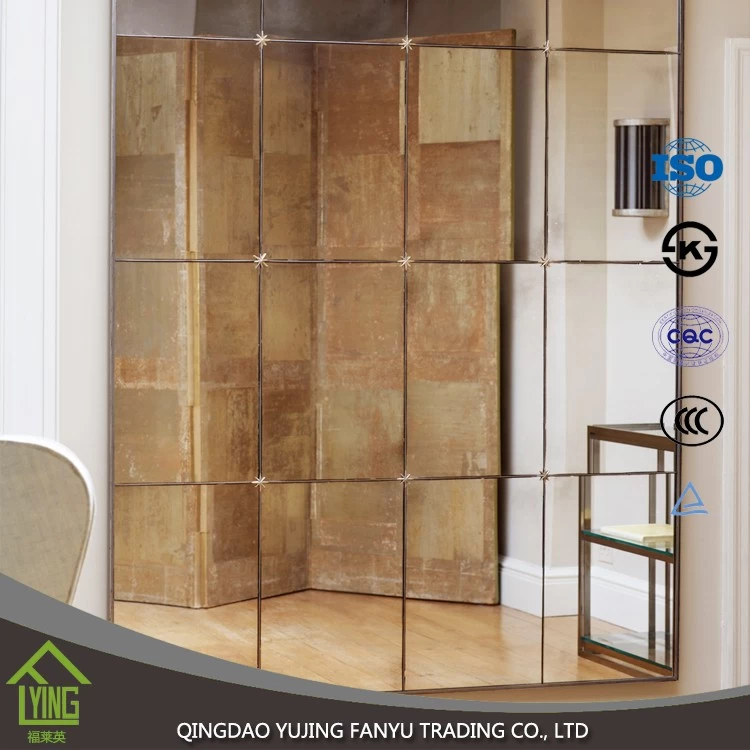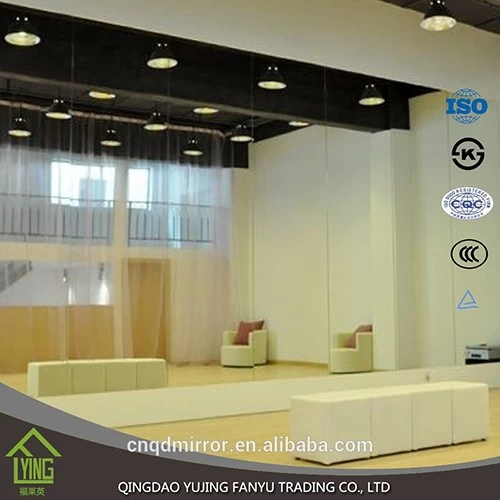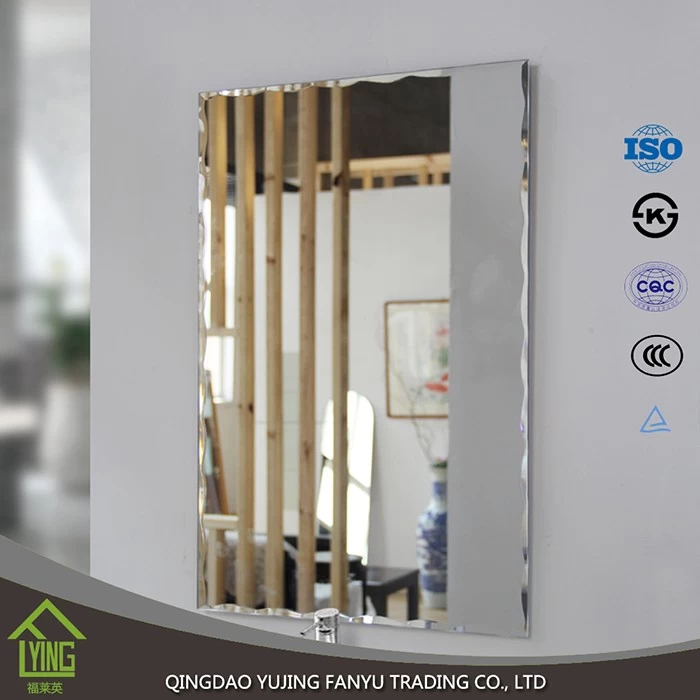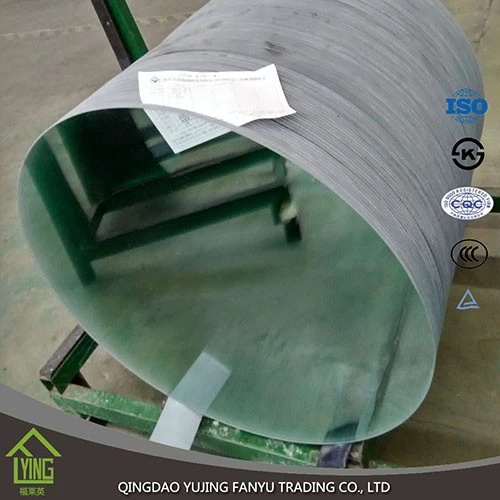Do you know the insulating glass and the vacuum glass on the doors and windows?
Fanyu
Chinamirrormanufacturer. com
2017-09-19 11:06:43
Vacuum Glass:
1993, the world's first 1 meters $number meters of vacuum glass samples came out, the inventor is the Peking University physics Tang Yu and R. E. Collins two people.
Vacuum glass refers to a vacuum between two layers of glass, vacuum layer is relatively thin, in order to achieve the balance of glass inside and outside the pressure, the glass must be arranged neatly between flexible or steel support, used to support the glass under pressure from the outside atmosphere, the vacuum glass is custom-made products, because there is strong atmospheric pressure so the requirements are relatively high.
According to the principle, the vacuum glass can be likened to a flat-shaped thermos flask, the same point is that the interlayer of the two layers of glass is a vacuum below the 10-1PA, so that the gas heat transfer can be neglected; both walls are coated with low radiation film, so that the radiation heat transfer as small as possible. The difference: first, the vacuum glass for doors and windows must be transparent or light, can not be like a thermos of opaque silver film, plating is a different kind of transparent low radiation film; the second is from the balanced compression of the cylinder or spherical vacuum flask into a flat plate, must be placed between the two layers of glass "support" matrix to withstand about 10 tons per square meter of atmospheric pressure , so that the glass remains spaced, forming a vacuum layer. The spacing of the "support" matrix is designed according to the thickness and mechanical parameters of the glass plate, between the 20mm-40mm. In order to reduce the heat transfer formed by the support "Hot bridge" and make the human eye difficult to distinguish, the support is very small, the support in the product diameter in 0.3mm-0. Between 5 mm, height between 0.1mm-0.2mm. Vacuum Glass also has a better function that is noise, because there is a vacuum layer, unable to conduct noise, so the vacuum glass can isolate 90% of the noise.
Product Advantages:
1. Low Carbon Energy saving
2. Thermal insulation
3, Sound insulation noise reduction
4, away from condensation
5. Widely used
Product Type:
1. Vacuum Laminated Glass
2, "vacuum + hollow" combination vacuum glass
3. "Vacuum interlayer + hollow" structure
4, double vacuum layer Vacuum glass
II. Insulating Glass
The hollow glass was invented by the Americans in 1865, and is a kind of good heat insulation, sound insulation, aesthetic application, and can reduce the weight of the building of new building materials, it is used two pieces of (or three pieces) of glass, the use of high-strength and high gas tightness composite binder, the glass sheet with the aluminum alloy containing desiccant frame bonding, made of high efficiency insulation glass. A variety of insulating glass performance is superior to ordinary double-layer glass, so it has been recognized all over the world, insulating glass is two or more pieces of glass to effectively support evenly spaced and sealed around, so that the glass layer between the formation of a dry gas space glass products. Its main materials are glass, aluminum spacer, corner plug, butyl rubber, polysulfide rubber, desiccant.
Ordinary Insulating glass
Insulating Glassis composed of two layers or multilayer flat glass. Four weeks with high-strength and high gas tightness composite binder, two pieces or more pieces of glass with sealing strip, glass-bonded, sealed. The middle is filled with dry gas, and the frame is filled with desiccant to ensure the air dryness between the glass sheets. Can be selected according to the requirements of a variety of different performance of the original glass, such as colorless transparent float glass, endothermic glass, thermal reflective glass, Rings, tempered glasses and the border (aluminum frame or glass bar, etc.), by cementation, welding or weld and made.
Hollow Glass can be used 3, 4, 5, 6, 8, 10, 12mm thick slices of original glass, air layer thickness can be 6, 9, 12, 15, 18, 21mm interval.
High Performance insulating glass
High-performance insulating glass is different from ordinary insulating glass, except in the middle of the two layers of glass sealed into the dry air, but also the outer side of the glass intermediate air layer, coated with a good thermal properties of the special metal film. It can end up with a considerable amount of energy from the sun to the interior, which has a greater heat insulation effect. and must be filled with inert gas argon and krypton in its interlayer space.
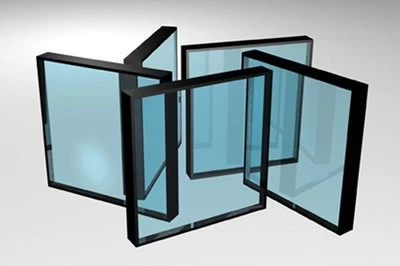
1993, the world's first 1 meters $number meters of vacuum glass samples came out, the inventor is the Peking University physics Tang Yu and R. E. Collins two people.
Vacuum glass refers to a vacuum between two layers of glass, vacuum layer is relatively thin, in order to achieve the balance of glass inside and outside the pressure, the glass must be arranged neatly between flexible or steel support, used to support the glass under pressure from the outside atmosphere, the vacuum glass is custom-made products, because there is strong atmospheric pressure so the requirements are relatively high.
According to the principle, the vacuum glass can be likened to a flat-shaped thermos flask, the same point is that the interlayer of the two layers of glass is a vacuum below the 10-1PA, so that the gas heat transfer can be neglected; both walls are coated with low radiation film, so that the radiation heat transfer as small as possible. The difference: first, the vacuum glass for doors and windows must be transparent or light, can not be like a thermos of opaque silver film, plating is a different kind of transparent low radiation film; the second is from the balanced compression of the cylinder or spherical vacuum flask into a flat plate, must be placed between the two layers of glass "support" matrix to withstand about 10 tons per square meter of atmospheric pressure , so that the glass remains spaced, forming a vacuum layer. The spacing of the "support" matrix is designed according to the thickness and mechanical parameters of the glass plate, between the 20mm-40mm. In order to reduce the heat transfer formed by the support "Hot bridge" and make the human eye difficult to distinguish, the support is very small, the support in the product diameter in 0.3mm-0. Between 5 mm, height between 0.1mm-0.2mm. Vacuum Glass also has a better function that is noise, because there is a vacuum layer, unable to conduct noise, so the vacuum glass can isolate 90% of the noise.
Product Advantages:
1. Low Carbon Energy saving
2. Thermal insulation
3, Sound insulation noise reduction
4, away from condensation
5. Widely used
Product Type:
1. Vacuum Laminated Glass
2, "vacuum + hollow" combination vacuum glass
3. "Vacuum interlayer + hollow" structure
4, double vacuum layer Vacuum glass
II. Insulating Glass
The hollow glass was invented by the Americans in 1865, and is a kind of good heat insulation, sound insulation, aesthetic application, and can reduce the weight of the building of new building materials, it is used two pieces of (or three pieces) of glass, the use of high-strength and high gas tightness composite binder, the glass sheet with the aluminum alloy containing desiccant frame bonding, made of high efficiency insulation glass. A variety of insulating glass performance is superior to ordinary double-layer glass, so it has been recognized all over the world, insulating glass is two or more pieces of glass to effectively support evenly spaced and sealed around, so that the glass layer between the formation of a dry gas space glass products. Its main materials are glass, aluminum spacer, corner plug, butyl rubber, polysulfide rubber, desiccant.
Ordinary Insulating glass
Insulating Glassis composed of two layers or multilayer flat glass. Four weeks with high-strength and high gas tightness composite binder, two pieces or more pieces of glass with sealing strip, glass-bonded, sealed. The middle is filled with dry gas, and the frame is filled with desiccant to ensure the air dryness between the glass sheets. Can be selected according to the requirements of a variety of different performance of the original glass, such as colorless transparent float glass, endothermic glass, thermal reflective glass, Rings, tempered glasses and the border (aluminum frame or glass bar, etc.), by cementation, welding or weld and made.
Hollow Glass can be used 3, 4, 5, 6, 8, 10, 12mm thick slices of original glass, air layer thickness can be 6, 9, 12, 15, 18, 21mm interval.
High Performance insulating glass
High-performance insulating glass is different from ordinary insulating glass, except in the middle of the two layers of glass sealed into the dry air, but also the outer side of the glass intermediate air layer, coated with a good thermal properties of the special metal film. It can end up with a considerable amount of energy from the sun to the interior, which has a greater heat insulation effect. and must be filled with inert gas argon and krypton in its interlayer space.


